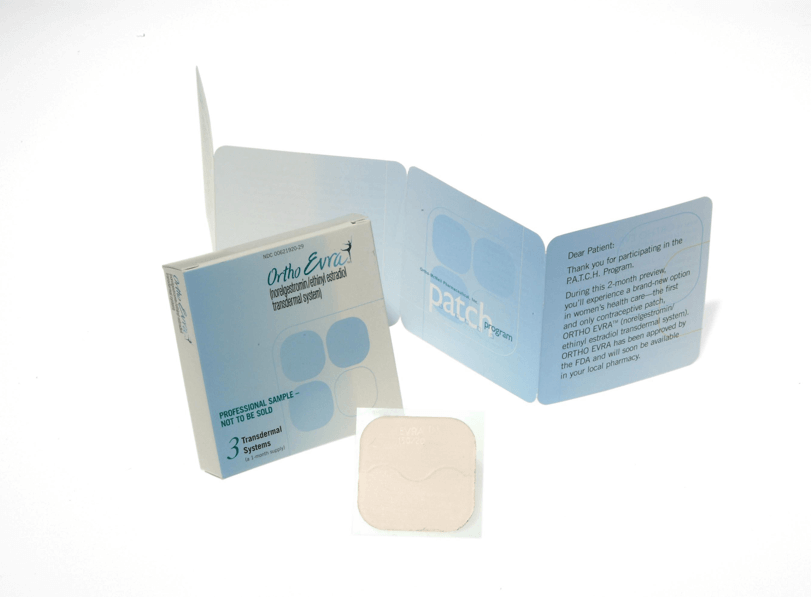Contraceptive Patch Evra Australia News
A birth control patch is commonly known as Ortho Evra (or Evra patch). The beige patch sticks to the skin and helps prevent pregnancy. The patch is applied to the skin once a week for three weeks straight. Contraceptive Sponges Out of 100 nulliparous* Women Using Contraceptive Sponges *Nulliparous is a medical term that means a woman has never given birth to a baby. The Ortho Evra Contraceptive Transdermal Patch is made by Ortho-McNeil Pharmaceuticals, a division of Johnson & Johnson. WebMD Health News Reviewed by Louise Chang, MD on January 18, 2008 Sources.
The contraceptive patch, a new form of contraception launched in 2002, has been hailed as the greatest family planning breakthrough since the Pill.Easy to use and 99 per cent reliable, the Ortho-Evra patch is used by more than four million women globally and thousands in the UK.
But this week, ten women in America who have suffered blood clots have filed a class action in the Superior Court saying the patch was defectively designed and dangerous, claiming it can increase the risk of strokes and fatal blood clots. So should users worry? Here's what you should know.
What is the patch?
The thin beige patch is worn on the skin like a plaster.
How does it work?

The patch works in the same way as the combined oral contraceptive pill, delivering female hormones, progesterone and oestrogen, into the bloodstream. These stop the ripening and release of an egg from the ovary, and trick the body into thinking ovulation has occurred.
What are the advantages of the patch?
Each patch lasts a week, with a week off every month, so women do not have to remember to take a pill every day. It bypasses the stomach, so there is no danger of nausea or vomiting making it less effective.
Why is there controversy surrounding the patch?
Several lawsuits have already been filed in the U.S. against the makers, Ortho-McNeil, by families of women who have died or suffered blood clots while using the patch. Around a dozen women died in the U.S. last year from blood clots believed to be related to its use.
What about fatal clots?
Contraceptive Patch Evra
The Associated Press in the U.S. carried out an investigation during which they studied Federal Drug Safety reports into the patch. They concluded that a woman who does not smoke and is under 35 has a one-in-200,000 chance of dying from a blood clot while taking the combined pill. This rises to a threein-200,000 chance of dying from a blood clot if she uses the contraceptive patch.
What do the manufacturers say?
The Food and Drink Administration in the U.S. and Ortho-McNeil both maintain that the patch is as safe as using the combined oral contraceptive pill.
Katherine LaGuardia director of medical affairs for Ortho, disagrees with the mortality rate of three in 200,000, as suggested by the AP study. She says there were no fatalities during clinical trials of the patch.
Why do hormones used in birth control lead to blood clots?
Many studies show that there is a slightly increased risk of developing blood clots while taking hormones for birth control. This is because oestrogen helps make the blood thicken.
Why do blood clots kill?
Many women will develop small blood clots, usually in the legs, which break up and dissolve of their own accord safely. In a few rare cases, the clots travel to the brain, where they can cause stroke and death. The World Health organisation has published a strict set of guidelines for who should be prescribed hormones.
Who should not use the patch?
- Women who smoke, especially those over 35.
- Women with a previous or current blood clot, either in the leg or a lung.
- Some women with high blood pressure.
- Women with markedly abnormal function of the liver.
- Some women with diabetes.
- Women who are immobile, such as after major surgery.
- Women who have just given birth.
- Women with a history of migraines with auras.
Should women worry?
'The risk from either the patch or the Pill is very, very small,' says Toni Belfield of the Family Planning Association. 'Not being on the patch and getting pregnant is more dangerous than the patch itself.'
Contraceptive Patch Evra Australia News Today
How do you apply it?
The sticky patch is easy to apply and can be worn on: the buttocks, abdomen, upper torso (excluding the breasts), or upper outer arm. It is waterproof, and a woman can shower, swim and exercise.
How effective is it at preventing pregnancy?
The birth control patch is over 99 per cent effective when used correctly. Larger women (over 14st) may find it is less effective because the hormone is more diluted.
Can anything else make the patch less effective?
Some medications, used to treat epilepsy and TB, and antibiotics can make it less effective. Always tell you doctor, dentist or nurse you are using it. You may need to use a different method of contraception.
Are there side-effects?
Like other hormone birth control methods, Ortho-Evra does have side-effects. Common ones include breast discomfort, spotting between periods, nausea, headache and flu-like symptoms. The patch can also irritate the skin and should be stuck in a different position each week to minimise that.
Contraceptive Patch Evra Australia News 2017
How do you dispose of it when it has been used?
Don't flush the used patch down the loo because it still contains traces of hormones. There have been concerns that hormones in the water supply are contributing to an increase in female characteristics in male fish. Instead, wrap it up in the disposal envelope provided and put it in the bin.
Evra Patch Dosage
Family Planning Association helpline: 0845 310 1334 (Monday-Friday 9am-6pm).